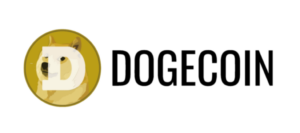Are you curious about trading Dogecoin but want to ensure you do it safely? Look no further – this ultimate guide will walk you through everything you need to know to trade Dogecoin securely. Dogecoin, a popular cryptocurrency known for its meme-inspired roots, has gained significant attention in the digital currency world. With its rising popularity, it’s essential to understand the basics of trading Dogecoin and how to protect your investments.
The first step to safely trading Dogecoin is to choose a reputable cryptocurrency exchange. You’ll want to select an exchange that has a good reputation, user-friendly interface, and strong security measures in place. Some popular exchanges that support Dogecoin trading include Binance, Kraken, and Coinbase. Once you’ve chosen an exchange, create an account, and ensure you enable all available security features, such as two-factor authentication, to protect your account from unauthorized access.
Before you start trading Dogecoin, it’s crucial to familiarize yourself with the market trends and fluctuations. Dogecoin, like other cryptocurrencies, is known for its volatility, so it’s essential to do your research and stay informed about the latest news and developments in the cryptocurrency world. Keep an eye on factors that could impact Dogecoin’s price, such as regulatory announcements, technological upgrades, and market sentiment.
When it comes to storing your Dogecoin, it’s recommended to use a secure cryptocurrency wallet. There are different types of wallets available, including hardware wallets, paper wallets, and software wallets. Hardware wallets, such as Ledger Nano S and Trezor, offer offline storage and are considered one of the safest options for storing cryptocurrencies long-term. Paper wallets, on the other hand, provide an additional level of security by storing your private keys offline. Software wallets, like Exodus and Atomic Wallet, are convenient for daily trading but may be more susceptible to hacking attempts.
To enhance the security of your Dogecoin holdings, consider diversifying your portfolio and avoiding keeping all your investments in one place. By spreading your investments across different assets, you can mitigate the risk of potential losses in case of price fluctuations or security breaches. Additionally, regularly monitor your investments and be cautious of phishing scams and fraudulent schemes that target cryptocurrency users.
When executing trades on exchanges, be mindful of the trading fees and withdrawal limits imposed by the platform. Some exchanges charge a percentage of your transaction as a fee, so factor in these costs when planning your trades. Pay attention to the liquidity of the market and the trading volume of Dogecoin to ensure you can buy or sell your assets without significant price slippage.
In conclusion, trading Dogecoin can be an exciting venture, but it’s crucial to prioritize safety and security in your trading activities. By choosing a reliable exchange, staying informed about market trends, using secure wallets, diversifying your portfolio, and being cautious of potential risks, you can trade Dogecoin with confidence and protect your investments. Take the time to educate yourself and make informed decisions to navigate the world of cryptocurrency trading successfully.



